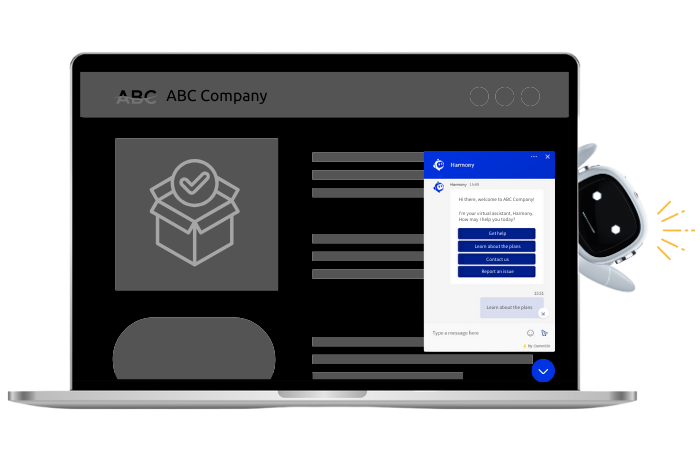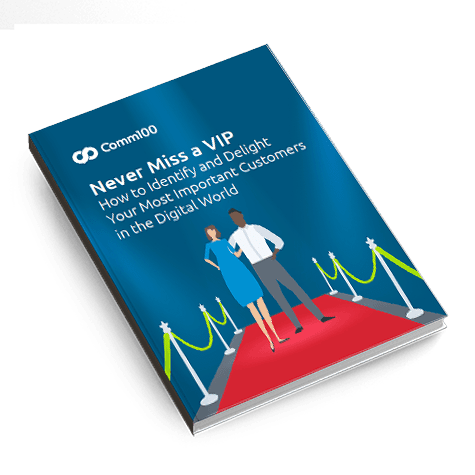Your VIPs are your company’s most important customers, as defined by you.
Whether you work in a B2B or B2C industry, you can identify your VIPs either by demographics, or by their activity with your brand. A VIP could be a valued long-term customer, a new prospect who’s on the edge of making a purchase, or a cranky client who’s at risk of harming your brand’s reputation.
No matter how you define them, they should be recognized for what they are: the makers and breakers of your business.
It’s important to remember though, having too many VIPs could overwhelm your support team and lower the quality of customer care, defeating the purpose entirely. On the other hand, deny certain customers VIP status and you could damage relationships or undermine loyalty. Providing the right people with the right amount of special care can be simple to execute when done right, and have mammoth results.
Here are five key customer profiles to consider when deciding who should earn the VIP badge:
1. The Big Spender
According to Pareto’s 80/20 rule, 80 percent of your profit comes from about 20 percent of your customers. These are your high spenders, frequent buyers, and customers who have been active with your company for an extended period of time. They have the highest lifetime value (LTV) out of all your customers and are major contributors to your business’ success.
Assigning VIP status to your big spenders will foster greater loyalty and encourage them to keep buying from you. Still, not everyone who drops a large sum on your products or services may be a true VIP. Depending on your product and business, your top-tier buyers should include one or more of the following:
High-value single transaction customers
These are great VIPs for B2B businesses that provide a product or service that may not need to be purchased frequently, but that requires ongoing support. For example, a SaaS provider might have a high-spending customer with a large team who gets billed annually. It’s important to give this customer VIP treatment that includes special follow-up help so when their annual renewal comes around, it’s a no-brainer for that customer to stay on.
Customers with a target cumulative spend over a given period
One large purchase doesn’t always mean that the customer will come back, or will expect any significant assistance. Instead, you might need to look at a broader purchase history to find your VIPs. B2C businesses that thrive on cumulative purchases should consider not only how much a customer spends, but also over what period of time.
For example, an e-commerce business might reward purchases using a point system. Customers who accumulate enough points over the period of a year get access to VIP status and treatment. Being transparent with your customers about this program and gamifying it can encourage them to spend more to reach that status.
Customers with a target number of transactions over a given period
Some companies may choose to reward the number of transactions instead of the overall transaction value. This can be a good approach for companies with a higher baseline value for their product or service, who want to develop an ongoing rapport with their most frequent users.
For example, a travel agency might reward customers by giving them VIP status once they’ve booked ten trips, regardless of the value of each individual trip.
Assigning VIP status to your ‘frequent flyers’ encourages repeat spending and fosters continuous engagement with marketing content. By giving these VIPs a consistent and high-quality experience, such as assigning them to the “personal shopper” representative they worked with last time, you will inspire them to keep using your product or service, and likely spend even more.
Recommended for you: 3 Ways to do More with Customer Experience Personalization
2. The Exceptionally Angry Customer
VIP status isn’t just a tool for rewarding sales; it can also be used to discourage furious customers from harming your brand. While it would be wrong to give every disgruntled customer the VIP treatment, here are some examples of scenarios where an Exceptionally Angry Customer should become one of your VIPs.
A customer has reached out multiple times and has marked all or a majority of resolutions as unsatisfactory.
One way to gauge customer dissatisfaction is through feedback surveys. If a customer has marked multiple interactions as unsatisfactory, you can assign them with a VIP status so that your agents can prioritize their unresolved complaints and even be alerted to their presence on your site whenever they return.
An upset customer has reached out multiple times and their situation had to be escalated.
Customers who had a particularly difficult time getting an issue resolved can be designated as a VIP so that they are transferred to a representative who is capable to handle and/or familiar with their situation every time. This can be a win-win situation; the customer is linked to an agent they know they can trust, and the agent has the opportunity to continue a relationship with someone they genuinely helped.
An upset customer has taken to social media to flame your brand.
Thirteen percent of dissatisfied customers will tell more than 20 people about their negative experience. On social media, that number can quickly soar into the hundreds or even thousands.
When a customer uses social platforms to publicly shame your brand, you must take immediate action to remedy the situation. You can tackle a customer’s public complaint at once by triggering an alert to an agent, who can then reach out to them in a private message on the same social media platform they used to complain.
Once the issue is resolved, the agent can assign them a VIP status to ensure they get the red-carpet treatment the next time they reach out.
While it may be tricky to quantify anger, your team can define SLAs (service level agreements) that will help your company know when to grant VIP status.
To learn more about how to define SLAs across channels in relation to VIP status, read our white paper ‘Never Miss a VIP: How to Identify and Delight Your Most Important Customers.’ It’s worth a read because when you VIP treatment is done right, once-angry customers can become your most vocal advocates.
AI-Powered Live Chat That Empowers Agents and Impresses Customers
Enhance every customer interaction with the most advanced, AI-driven live chat solution on the market.
Learn more
Solution
3. The A-list Prospect
Every company has an Ideal Customer Profile (ICP). These are the types of customers that have been determined to be the most profitable. In the B2B world, acquiring these customers is best achieved through Account Based Marketing (ABM). They are the very definition of VIPs, because a significant portion of your marketing and sales resources are aligned to their pursuit.
When translating your ABM list into VIPs in your database, accounts can be separated into different tiers, each with their own priority level. This enables you to route prospective accounts to their designated account managers whenever they come online. To learn more about how this works, read our ‘Never Miss a VIP’ white paper.
Recommended for you: Account Based Chat: Three Simple Ways to Boost Your ABM Program
4. Your Business Partners
In every industry, it pays to have partners – whether they’re a reseller, referral partner, influencer, or part of a strategic ecosystem. They are important to your business, so they rightfully deserve a VIP status and to be supported quickly and attentively.
As part of your VIP treatment, you can greet the partner by name (just like with your ABM target accounts) and then route them to a team member who can help them get exactly what they’re looking for – whether it’s the marketing team, their account manager, or technical support.
5. Your Biggest Advocates
Another valuable partnership is that between you and your biggest advocates. By giving VIP status to the customers who bring in the most referrals – or the most profitable referrals – you can grow your sales without spending on advertising. (Of course, sometimes you do pay these advocates, or ‘influencers’, especially if you’re in a B2C business).
According to Nielsen, 92 percent of consumers believe recommendations from friends and family over all forms of advertising. Jay Baer, the author of Talk Triggers, presented similar findings in an interview with Forbes. Depending on whether you work in B2B or B2C, between 50 and 91 percent of all purchases are influenced by word-of-mouth.
Customer referrals can be easily tracked and measured through a link-based system. By using your VIP status system to reward referrals, you will be able to deeply support the customers that best support you.
Recommended for you: Customer Service Isn’t Dead: How to do it Right & Companies Already There
Conclusion
VIPs will look very different across industries and unique businesses. It’s up to you to decide what a VIP looks like to your company. Even your direct competitor may have an entirely different perspective on who their ideal VIP customers are.
Consider what specific needs your customers have and customize your VIP rules to fit the requirements of your unique user base. Just be consistent – your VIP experience will be devalued if you don’t apply it evenly, especially if your customers are aware of it.
Once you have identified your VIPs, you need to make sure that you are capable of providing VIP-grade customer service. Use your customer engagement platform to establish routing rules that will automatically send your VIPs to the support team or agent that can best serve them, or to automatically follow up on their preferred channel.
Agents should have access to your VIP’s complete digital engagement history in a single console (just one of the benefits of digital omnichannel). This way, agents will be able to recognize your VIPs no matter what channel they use to reach you and will be equipped to provide the personalized support that your VIPs expect.
This post is the first of two that cover just a few key points from our white paper, ‘Never Miss a VIP: How to Identify and Delight Your Most Important Customers.’
Download now: Never Miss a VIP White Paper
Learn how to define your VIPs, the tricks to identifying them across all digital channels, and how to provide them with that white-glove treatment so they keep coming back for more.
Download Now
Whitepaper








